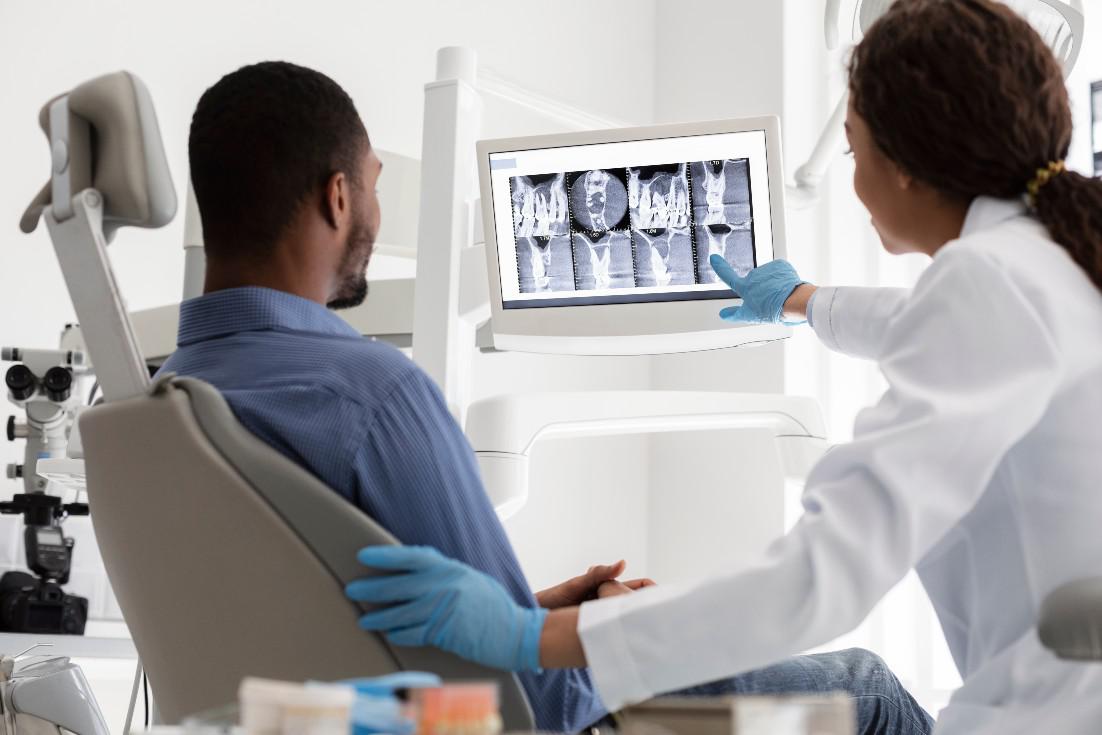 If you’re one of the estimated 50-80% of adults with dental anxiety, chances are you’ve avoided or delayed dental care at some point in your life. Whether it be a routine cleaning or a more in-depth procedure, such as a root canal or filling, putting off dental visits often results in more significant issues down the road.
If you’re one of the estimated 50-80% of adults with dental anxiety, chances are you’ve avoided or delayed dental care at some point in your life. Whether it be a routine cleaning or a more in-depth procedure, such as a root canal or filling, putting off dental visits often results in more significant issues down the road.
In the majority of cases, dental anxiety is a result of a prior traumatic dental experience. However, there are patients with dental anxiety who have never visited a dentist yet still fear the experience. Dental anxiety typically comes down to one or more of these root concerns:
- Fear of pain
- Fear of injections
- Fear of helplessness
Fortunately, there are many ways in which today’s dental technology can alleviate these types of anxiety.
Fear of pain – Laser dentistry is an excellent alternative for patients who are particularly sensitive to pain. Because lasers don’t cut through tissue in the same way that traditional dental instruments do, patients experience less swelling, tenderness, and bleeding. This less invasive treatment also prevents many of the sounds that can trigger anxiety, as the lasers are much quieter and emit a low pulsing sound that many people find relaxing.
Fear of injections – It’s estimated that at least 10% of adults have a fear of injections that inhibits their ability to receive medical care. Traditionally, anesthetic is delivered using a hypodermic needle and syringe. Though effective, there is usually some pain or discomfort associated with the initial injections, which can deter patients from getting the dental care they need. The advent of “The Wand” eliminates this barrier. The Wand is a computer-assisted system that looks like a pen and gradually pushes anesthetic gently into the gum. The device uses advanced technology to identify intraligamentary tissue quickly, allowing for the best possible injection results. The Wand also allows dentists to easily numb a single tooth without the rest of the mouth being affected, reducing the uncomfortable side effects of common numbing agents.
Fear of helplessness - The feeling of having no control over a situation is frightening for many. Sitting back in a dental chair, unable to see what is happening, is a vulnerable position that can trigger intense dental anxiety. Such an instance is where good communication between you and your dentist comes into play. When you feel informed and in control throughout a visit, you’re less likely to be anxious, even when you’re looking at the ceiling. Don’t be afraid to share your feelings! Communication is a two-way street, and just as it’s up to our team to ensure patients have all the information they need, the reverse is just as imperative. It’s vital that patients take an active role in sharing information, as well as concerns.
Since people tend to be more afraid of the unknown, we use a patient education system to give patients a visual walkthrough of the dental procedure so they know what to expect before they’re in the chair. Additionally, using an intraoral camera connected to a screen allows patients to see exactly what their dentist sees, which helps to further demystify the process.
Our team understands that while a procedure might be “routine” for us, it likely isn’t for our patients. That’s why we work hard to make sure patients are informed and comfortable at every touchpoint. We believe that though patients may not look forward to the procedure itself, the experience doesn’t have to be frightening or uncomfortable.
Quality patient care has always been at the heart of our practice. If you’re concerned, worried, or fearful of the dentist, our team is here to help. Take the first step by contacting our office.

